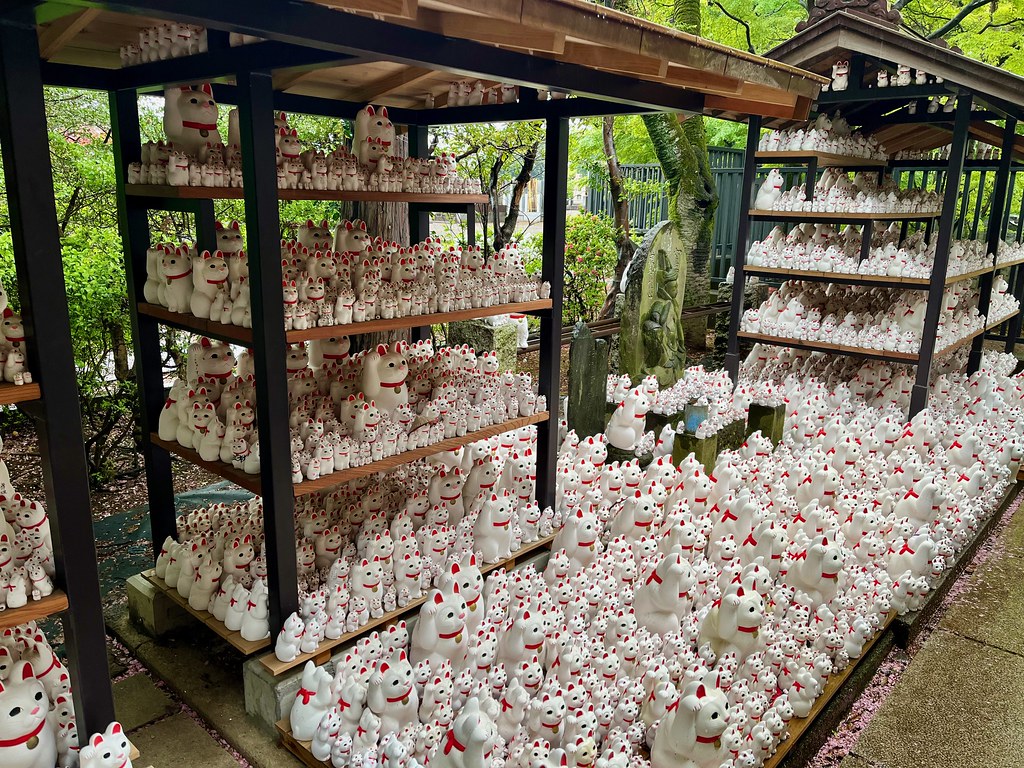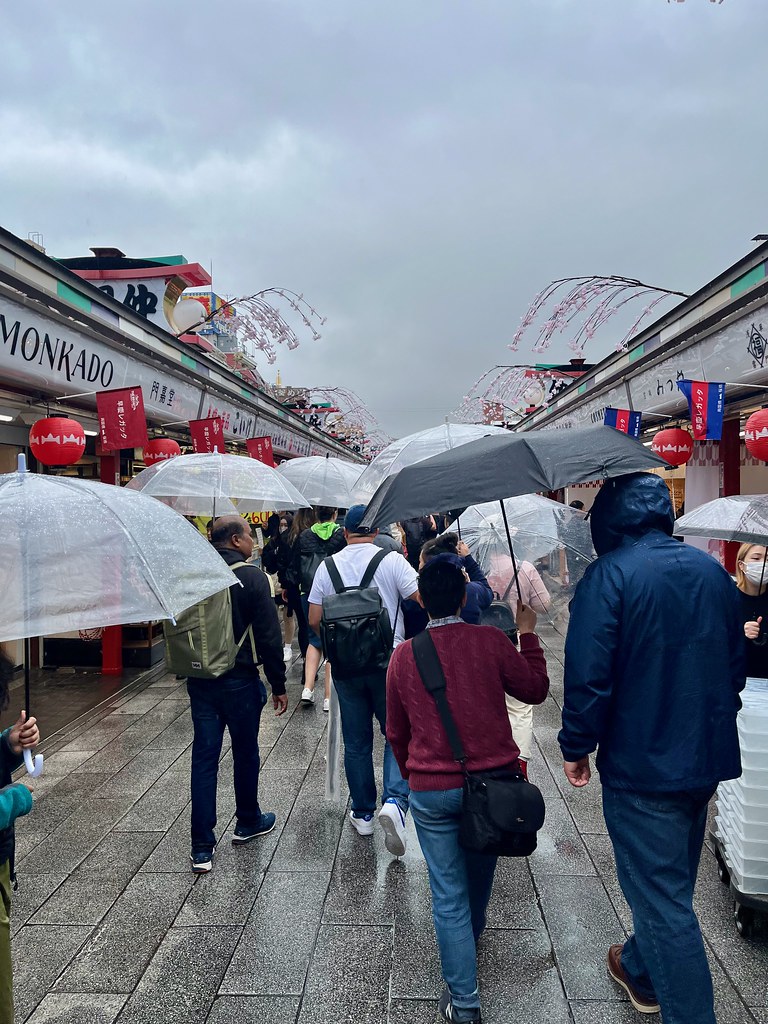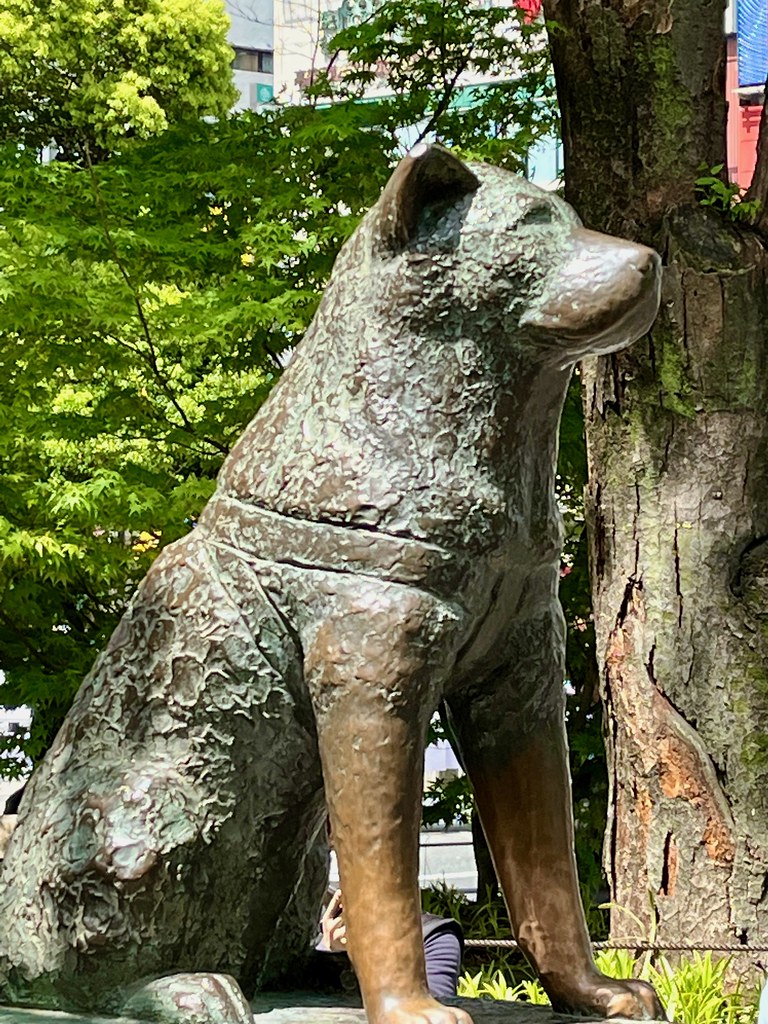I arrived in Japan on a Friday evening, having lost an entire day crossing the International Date Line from Honolulu. But it also meant I got a free weekend in Tokyo before resuming work on Monday. It’s easier and cheaper to stay in a hotel all weekend than go half way around the world and back. So I got to play tourist for a couple of days!
… And I crammed a lot of typical Tokyo tourist stuff into that brief weekend. The video provides a nice overview of my Saturday (cold and rainy) and Sunday (warm and sunny).
First I had to deal with jet lag again. I was nearly accustomed to Hawaiian time when I left for Japan. Now I was thirteen hours ahead of home time, the east coast of the United States. So night felt like day and day felt like night. Once again I rose from bed wide-awake at 3:00 a.m.
Moderate rain rolled in overnight along with a chill. Fortunately I brought all of the layers plus a watertight windbreaker and an umbrella. Nothing would stop me after sunrise.
Gotokuji Temple

I got my first taste of the Tokyo Metro system early Saturday morning and rode to Gotokuji, a 15th century Buddhist temple (map). Visitors know it mostly for the thousands of maneki-neko (“beckoning cats”) occupying its grounds. Similar figurines appear all over Japan and symbolize good fortune. However, this may be the place where it all began according to a popular origin legend:
“A samurai lord… took shelter under a large tree near the temple, only to witness the cat waving to him with one paw from inside. Curious, he got closer to investigate the strange cat, when the tree behind him was suddenly completely destroyed by a bolt of lightning. Grateful to the cat for seemingly saving his life, the lord became a patron of the temple and rebuilt the crumbling structure in honor of the lucky feline.”
So now people come here from all over Japan to add their own maneki-neko to the collection. A souvenir shop conveniently sells beckoning cats of various sizes for anyone who might need some extra luck.
Asakusa

Next came Asakusa, one of the older Tokyo neighborhoods, and traditionally one of its entertainment districts (map). Sure, it’s next-level touristy but I was a tourist so I didn’t care. I enjoyed poking around the shops full of weird stuff I’d never need or buy. Roofs covered some of the streets and it was nice to get out of the rain.
Zoning ordinances don’t seem to be much of a thing either. Every scrap of land, no matter how small or oddly shaped, had a building or several, often multiple stories, with countless tiny apartments. So right around then I started feeling the full brunt of the population density. It was now a little later in the morning and people were moving about. I remembered experiencing a similar feeling during my earlier trip to Japan a quarter century ago and I never completely adjusted to it this time either.
Nakamise-dori

Still within Asakusa, I ventured down Nakamise-dori street and back into the rain (map). Shopping stalls lined both sides and at times the crowd made it difficult to move forward. People and umbrellas clogged the narrow path. Everybody seemed to be in a good mood despite the weather and I rode a living current to its end. That was my goal anyway because it dumped us at Senso-ji.
Senso-ji Temple

This is the oldest and perhaps most important Buddhist temple in all of Tokyo (map). The original temple here dated to the year 645 and survived centuries of earthquakes and fires until World War II. Bombing destroyed it so the current structure is a reconstruction. Even so, it’s rather impressive and a genuine tourist magnet, attracting upwards of 30 million visitors a year. Wikipedia describes it as “the most widely visited religious site in the world.” I believe it based on the number of people I saw walking around there even during a cold rain.
Hachiko Memorial

I had nicer weather when I visited the Hachiko memorial in Tokyo’s Shibuya ward (map). You’ve probably heard the story. Hachiko belonged to a commuter who walked to Shibuya Station every day to go to work. In return, the faithful dog came to the station in the evening to greet his returning owner. Unfortunately, one day the owner passed away while at work and he never returned to the station. Even so, Hachiko came back every evening for the next nine years. This so touched local residents that the erected a statue in 1936, soon after Hachiko’s death.
I was lucky to get this unobstructed photo. Tourists competed aggressively for selfies and group photos. I caught a fortunate gap between two groups and took a closely cropped shot. The area around Shibuya Station simply swarmed with people.
Tokyo Skytree

I guess I had to go up to the top of the Tokyo Skytree; it’s sort-of an obligatory destination for any self-respecting tourist (map). This needle-shaped tower rises above everything else in the city, hiting 634 metres (2,080 feet). The view was spectacular — can’t argue with that.
But it was kind of a bust. It’s extremely popular so there were long lines for elevators to the first and second observation decks, and the same in reverse. Visitors packed the upper floors so everyone had to jockey and jostle for views. One time was enough for me; I don’t need to do it again. I’ll stick to the ground next time.
Articles in the Asia-Pacific Series
- Oahu: Honolulu Waterfront
- Oahu: Beyond Waikiki
- Japan: Tokyo Temples and Tourists
- Japan: Exploring Tokyo
- Japan: Farther Afield
- South Korea: Seoul
- South Korea: The DMZ
- Postscript: Interesting Signs
- Postscript: Brew It
See Also: The Complete Photo Album on Flickr

Leave a Reply